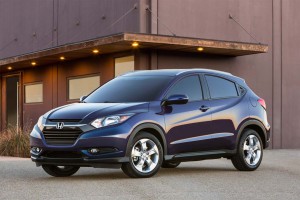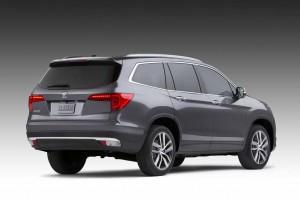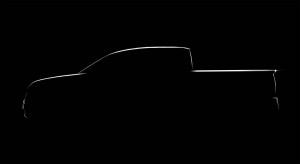
Honda's new HR-V is just one of several new truck introductions aimed at bolstering Honda's truck sales.
With fuel prices at levels U.S. consumers haven’t seen in years, light truck sales are booming. That’s good news for most manufacturers since pickups, SUVs and minivans tend to deliver some of the industry’s biggest profit margins.
But the market shift has been frustrating for the folks at Honda, who’ve watched their share of the truck segment slide since reaching a peak during the middle of the previous decade. That’s something the Japanese maker hopes to begin rectifying in the months ahead as Honda rolls out an assortment of new and updated light trucks, such as the all-new HR-V utility vehicle and the completely redesigned Ridgeline pickup.
“With gas prices likely to remain low, (the truck) segment is likely to continue to grow for some time,” said Jeff Conrad, general manager of the Honda brand, during a media drive of the new HR-V last week. “The challenge, he acknowledged, will be to “get our fair share.”
While experts often debate the precise definition of a truck – some insisting the term only covers true, body-on-frame “truck-trucks” – most analysts roll in crossovers, traditional SUVs, pickups, vans and minivans.

New for 2016, the Honda Pilot gets a dramatic exterior restyling with its customary boxy shape replaced with sculpted curves.
By the broader definition, Honda hit its peak in 2006, when U.S. buyers purchased 602,000 of its truck models, a 46% share of the automaker’s overall American sales. And even though Honda set an all-time sales record in 2014, its truck volume was down to 591,000 last year, about 42% of its overall sales.
Trucks, which had been losing share to cars during the Great Recession, as fuel prices soared to record levels, have more than recovered. They now account for 54% of the overall U.S. market, up from 51.4% a year ago, according to sales tracking firm Autodata.
Meanwhile, IHS Automotive anticipates sales of all utility vehicles will grow to 5.86 million this year, up from 5.5 million in 2014. By comparison, the firm forecasts sedan sales will be flat, at around 5.8 million. That would mark the first time utes have ever outsold sedans. But that shift is likely to expand in the years ahead.
For its part, “We’re through a complete makeover of the Honda truck line-up,” Conrad said during an interview with TheDetroitBureau.com
One of the most critical new models will be the little HR-V, which targets a niche below the current Honda CR-V – and which has become one of the world’s fastest-growing market segments. The HR-V is meant to “serve as a Gateway to the Honda truck line-up,” Conrad added, much as the Fit does on the passenger car side.
(Honda CEO ousted amidst airbag woes. For more, Click Here.)
The new model will join the recently updated CR-V, as well as redesigned versions of the Pilot, due later this year, and an all-new version of the Ridgeline.
The original version of that pickup generated a significant amount of buzz when it first appeared in late 2005. Honda opted for a unibody design with the midsize truck, rather than a body-on-frame architecture, “which is not in our DNA,” said Conrad. But its quirky shape and other problems led to a rapid slide in sales, Honda pulling the pickup off the market last year.
(Click Here for details about Honda cutting its global sales targets.)
When the Honda Ridgeline returns later in 2015, it will adopt a more conventional truck-like design – albeit still using a unibody construction. But with signs of an upturn in the overall midsize pickup segment, Honda is optimistic about its chances.
Meanwhile, the third-largest Japanese maker is working up a new version of the Odyssey minivan.
(To see more about the dramatic “shift” with the 2016 Honda Pilot, Click Here.)
If all goes according to plan, Honda hopes to see its truck offerings account for at least 50% of its overall U.S. sales once all its new models roll out and production gets up to speed.

